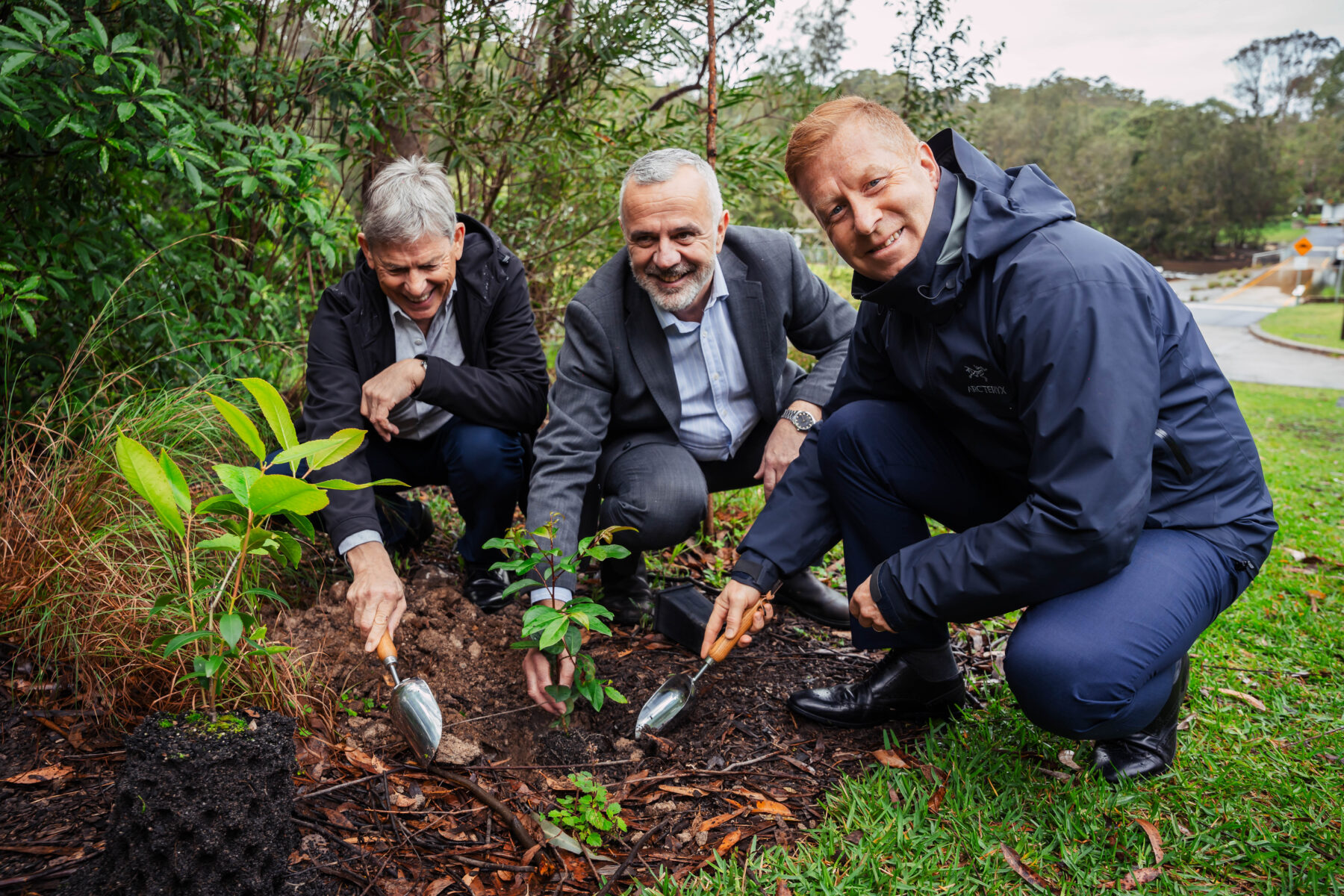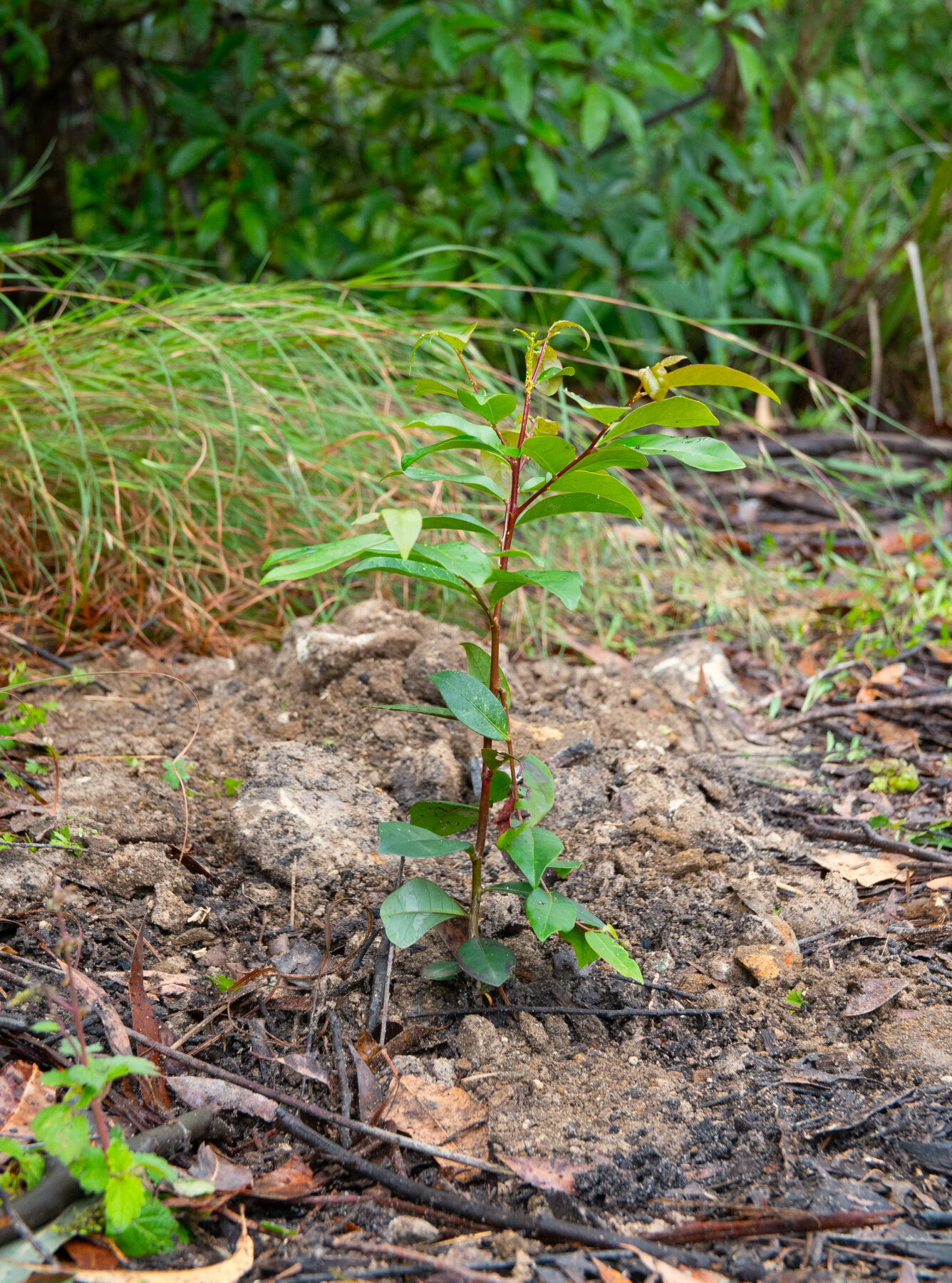One million trees planted, eight million to go

The planting of the blueberry ash (Elaeocarpus reticulatus) signifies a major milestone in the project by the Foundation of National Parks & Wildlife (FNPW), which seeks to restore vital habitats, support wildlife populations and enhance biodiversity in areas impacted by bushfire, deforestation and climate change.
“Every single tree planted represents hope and commitment to a greener, healthier future for Australia,” says FNPW CEO Ian Darbyshire. “This milestone underscores the importance of long-term sustainable conservation efforts.”
The Landscape Resilience Program started in response to the 2019–20 Black Summer bushfires that ravaged the country, burning more than 240,000sq.km and killing an estimated one billion animals, according to the CSIRO.

Known then as the Bushfire Recovery Program, the landmark initiative partnered with One Tree Planted and L’OCCITANE to plant one million trees across New South Wales, South Australia, Victoria and Queensland by 2025, establishing wildlife corridors, enhancing habitats and reducing Australia’s carbon footprint. The Australian Geographic Society also contributed funds to help the project come to fruition.
“[FNPW] works in three areas: we work in landscape resilience to plant trees; we work to acquire land and return it to national parks for protection; and we work to look after threatened species,” Ian says.
Since its inception, FNPW has regenerated more than 6,385sq.km across the country and, through this project, has propagated 296 diverse plant species and restored habitat to support more than 25 threatened wildlife species such as koalas, great-southern gliders and glossy black-cockatoos.
From little things, big things grow
The blueberry ash wasn’t the only tree planted, however. A cheese tree (Glochidion ferdinandi) was also planted – representing the first tree of the next eight million announced by the organisation yesterday.

This ambitious new goal to triple FNPW’s impact in the next five years seeks to support the Global Biodiversity Framework – a commitment to protect 30 per cent of the world’s land and sea, restore biodiversity and halt extinctions by 2030.
To achieve their new goal, FNPW is creating an additional 70 community-based Bushfire Recovery Nurseries around Australia to supplement the plantings.
The priority regions for these plantings over the next five years include eucalypt woodlands in south-east SA, subtropical rainforests and eucalypt forests in north coast NSW and south-east QLD, and grassy eucalypt woodlands in the NSW and VIC inland slopes. In the next five to 10 years, FNPW also wants to target areas in Western Australia and Tasmania.
“For us, it’s a big project. For Australia, it is a small step in the right direction,” Ian says. “What I would like to see is that together, we all work to get a lot more of our landscape protected.”
There are 7,999,999 trees left to plant to achieve this next milestone.
Small saplings, big impacts
According to FNPW, 104 endemic Australian species were listed as extinct by 2021 – 46 of these species were birds, reptiles and mammals that depended on native habitats. In the past 20 years, the number of threatened species and ecosystems has grown by more than one-third, and climate change threatens to increase the rate of losses by up to fivefold.
“Australia is recognised internationally for its unique flora and fauna, 80 per cent of which is endemic to the country,” says Mark Cairns, a conservation biologist and the Chief Program Officer at FNPW. “Since European settlement, we’ve lost about 100 million ha of vegetation, most of that having been woodland environments.”
According to Mark, land clearing for agriculture destroyed about 50 per cent of Australia’s eucalypt forests, and the ecosystems associated with those forests are now on the edge of collapse.
“There’s not enough [habitat] left to support our flora and fauna species,” Mark says. “It’s imperative we try and restore some of that ecological function, as, with climate change, we will see changes in rainfall, changes in temperatures and more severe disasters which will exacerbate biodiversity decline as species try to move away to habitat that no longer exists.”
Projects like the Landscape Resilience Program provide hope for sustained regeneration across Australia. With endeavours to bring in national and international partners across public, private and government sectors, FNPW believes their programs can bring about much-needed positive change.
“It’s going to take 200 years to repair some of that damage, but we’ve got to start somewhere,” Mark says. “The foundation is in a unique position where we can coordinate and bring together the necessary resources to make it happen.”





